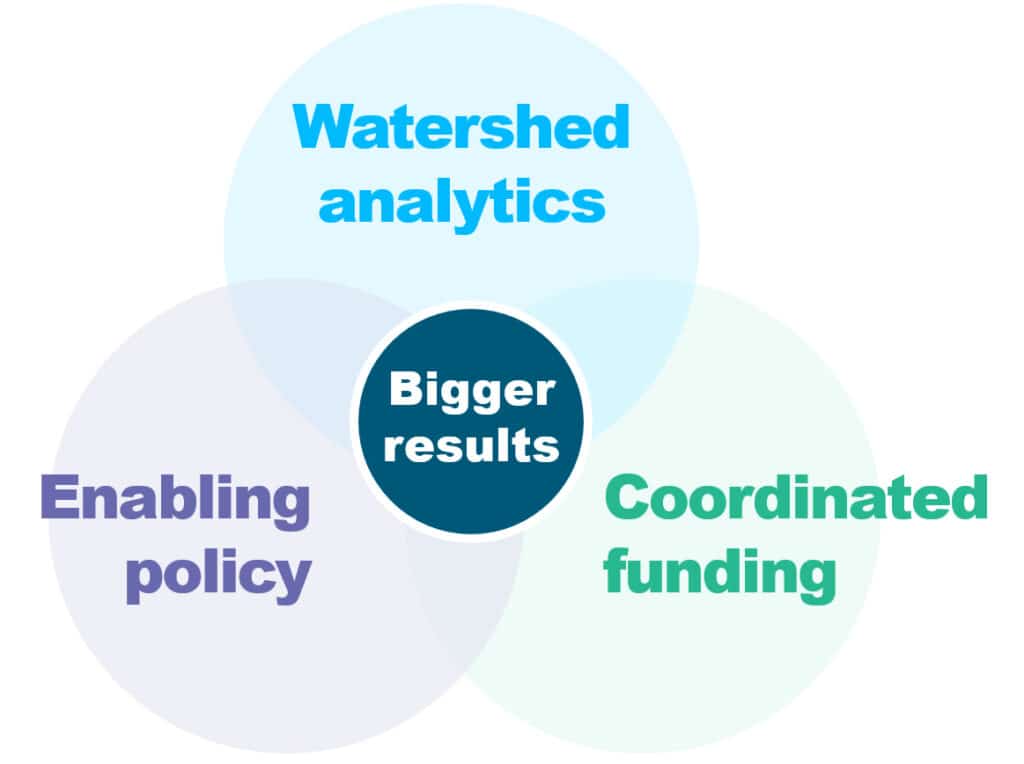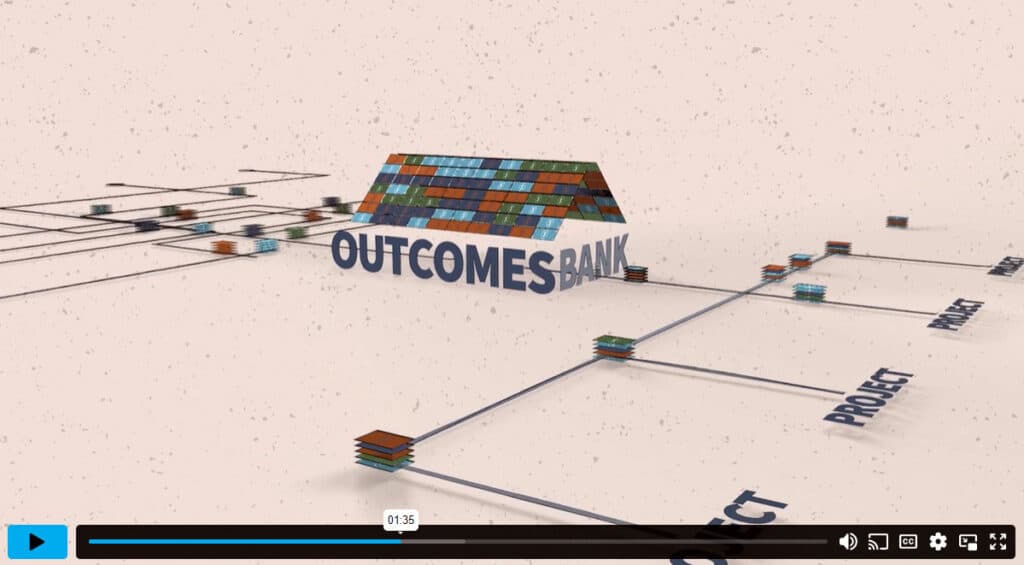Combining technology and financial tools in new ways to solve tough water problems
May 23, 2023
For more than a decade, The Freshwater Trust has relied on our “Quantified Conservation” approach to develop and implement bigger, faster, and cheaper solutions to tough water problems. First, we combine reams of data and modeling to develop the “analytics” that help us locate the best places to do work for the biggest impact, at the least cost. Then we work with agricultural partners, cities, utilities, local businesses, and agencies to fund and implement that priority work. We have applied and tested this approach across multiple watersheds, resulting in more than $1 billion in innovative conservation funding enabled. We take great pride in this work, but it still lacks scale. Here’s why.
The status quo approach is not delivering the results we need: This country has made significant progress on restoring water quality on some fronts since the passage of the Clean Water Act in 1972. However, despite trillions invested to-date, and more than a generation of effort, more than half of America’s waterways do not meet water quality standards. Unfortunately, even most of the river miles designated as Wild & Scenic—those that we want to protect and keep pristine—fail to meet the fishable-swimmable-drinkable requirements. On top of that, growing climate pressures are exacerbating flood, drought, and fire risks in almost every watershed. In short, we haven’t achieved our goals, and it’s getting harder to do so with each passing year.
The conservation funding system is a big part of that challenge: While the technology is available to identify, target, and implement conservation actions at the scale necessary to secure resilient watersheds, the challenge now is to quickly organize and deploy the trillions of dollars available for the environment with the projects that produce the best outcomes. Doing so is possible, but it’s not going to happen on its own.

Solving our water problems in the face of climate-driven urgency requires that we rapidly deliver a lot more funding and focus it on producing the highest-impact, least-cost environmental outcomes.
Currently, most funding from government programs is disbursed through process-heavy, technical, and lengthy project-by-project grant or loan programs. Many of these programs have “match” funding requirements that are burdensome for project proponents and make it difficult for multiple programs to be leveraged together, even if they have similar objectives. Project funding is also splintered across multiple funding programs, each focused on a sliver of the problem. On the project side, the long and uncertain application cycles associated with these programs often deter landowners with key lands and smartest farm upgrades from participating. Because each program is structured differently and focuses on a different part of the problem, it is difficult to determine what environmental outcomes have been produced and how those add up compared to watershed needs.
This status quo funding model is, in a nutshell, too slow, too costly, and too siloed to solve our pressing water challenges. We know we can’t start from scratch, so we need a set of tools and policies that bring all the pieces together to drive the focused, rapid, and coordinated investment needed to secure results before it’s too late.
The solution lies in coordinated watershed actions: The conservation funding system is extremely fragmented. We must therefore first reassemble the disparate pieces so that we can collectively fund watershed-wide solutions. With watershed analytics, we can now quickly and effectively quantify the “outcomes” of projects in multiple “currencies”—such as gallons of water saved, tons of carbon sequestered, or pounds of excess nutrients avoided. These currencies make it possible to coordinate investment of otherwise siloed public funds toward priority projects that produce outcomes most cost-effectively. Instead of complicated, customized funding applications through each agency, all government agencies can co-fund good projects and get the quantified outcomes they need in uniform units.
For example, if one program needs greenhouse gas emission reductions, another needs nutrient reductions, another needs water quantity savings, and a final program wants to support underserved rural community resilience, funding from all programs can be combined to support irrigation modernization projects because these projects produce all those benefit streams.
The system to make that aggregation happen is the “Watershed Outcomes Bank.” Without forcing all funding programs to adopt large-scale change, the Bank approach can serve as the centralized “hub” to bring together siloed public funds; ensure that funding is concentrated towards the highest return projects identified by analytics; quantify project outcomes in the different “currencies” needed by each funder; apportion those outcomes back to funders (i.e., do the accounting); and buffer on-the-ground partners from all the funding system complexity by just paying them for the outcomes they produce. Using this strategy, money can quickly get to the best projects in a hassle-free way, with significantly reduced transaction costs and improved regional coordination. In short, the aggregation that occurs through the Bank will make it possible to actually secure the bigger, better, faster watershed-scale results we know that farmers, fish, and cities all need.
A Watershed Outcomes Bank is a framework to combine funding sources through a “clearinghouse” that matches up otherwise siloed funds to high-priority, on-the-ground projects that most rapidly achieve watershed resilience targets.
More than anything, we must imagine a pathway forward that allows us to overcome our big climate and water deficit. This starts with full-scale use of big data and technology to modernize conservation, which must be combined with streamlined funding focused on securing outcomes. This approach rewards high-impact projects with more money, provides upfront funding to the farmers and landowners, and transparently tracks environmental outcomes.
#Clean Water Act #conservation finance #policy #watershed outcomes bank #watersheds

